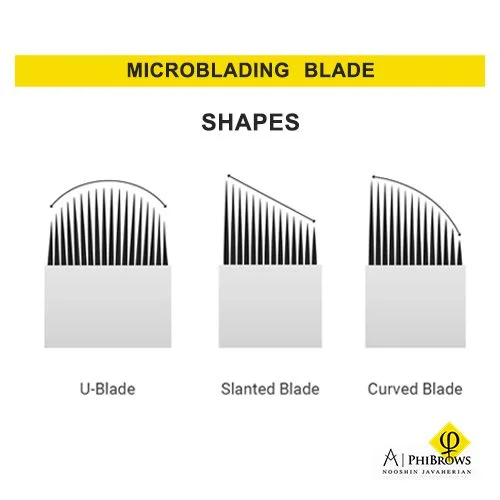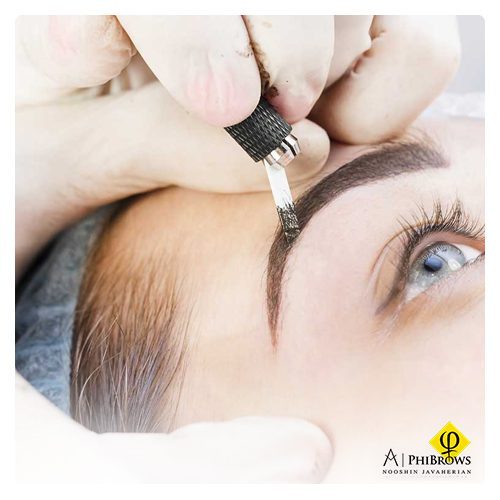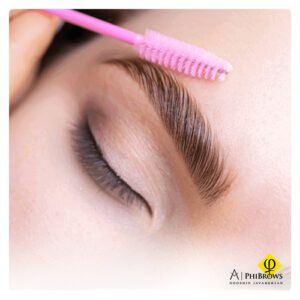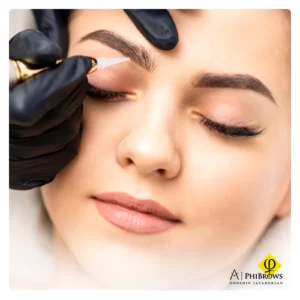One of the numerous benefits of the microblading procedure is that it can be customized. That is, a professional microblading artist can carefully examine the client’s skin prior to the procedure and select the appropriate blade to fit their skin type and accomplish the desired effects. Since everyone’s skin thickness and quality change, it’s common for the artist to use different blades on different customers.
Microblading Toronto treatment relies heavily on blades. As a result, it’s even more critical that you use high-quality blades. Microblading blades are made up of little, sharp needles which are held together in a holder to make a blade. The needles are arranged into a single row, several rows, with tight or broad spacing, or in a circle, depending on the kind of blade. After a single usage, the blades are fixed in handpieces or holders and discarded.
Read More: microblading: Microblading Toronto
What Are the Different Types of Microblading Blades?

The main classification of microblading blades is based on hardness. There is a distinction between flexi and hard blades.
Flexi Blades
Flexible or flexi blades (sometimes known as soft blades) have the following characteristics:
- They are made up of 7–21 needles that are joined together with plastic to give them flexibility.
- It’s ideal for both beginner and expert microblading Toronto artists.
- The base takes some of the strain, preventing the blade from going too far. It is appropriate for all skin types, but it is better suited to thin, delicate, or aged skin than hard blades.
Hard Blades
Hard blade characteristics:
- consisting of 7-21 needles.
- Stainless steel is commonly used for the base.
- It is intended for expert microblading artists who already have a great feeling of pressure and know how to reach the sweet spot or the ideal microblading depth.
- Hair strokes have even more definition than flexible blade strokes.
- They tend to penetrate the skin deeper and with less pressure.
- It is not suitable for sensitive or thin skin.
- appropriate for normal, thick, and tough skin.
Read More: How to Become a Microblading artist Toronto?
The Length of Microblading Blades

Now that we’ve covered the differences between hard and flexi microblading blades, let’s look at one of the most significant aspects: the length of the blade of microblading. The number of pins determines their length. The narrower the pins are, the more there are.
7-9 pins
The tiniest microblading blades, are excellent for sketching short and in-between strokes and adding extra strokes at the touch-up session.
10–13 pins
It is suitable for most customers with medium stroke lengths. A 12-pin blade is the most commonly used.
14–17 pins
It’s ideal for longer hair strokes and outlines.
18–21 pins
It must be used with caution and only by skilled artists for the longest hair strokes.
The Shapes of blades of microblading

There are several kinds of microblading blades. they are divided into three types based on their shape.
Angled or slanted blades (S blades)
The most common shading blades are slanted or angled blades. They are available in different thicknesses (0.15, 0.18, and 0.25), as well as lengths. These microblading blades are often used to achieve the traditional hair stroke appearance. Slanted blades are the best all-around blades for all levels of skill and are preferred by novices. They’re simple to work with and will assist you in perfecting your microblading Toronto technique.
U BLADES
U Blades are, as the name implies, U-shaped. These microblading blades are intended for more experienced artists who know how to correctly microblade and can easily create straight hair strokes with slanted blades. Curved hair strokes are created with U-shaped blades, giving the eyebrows a somewhat distinct appearance from slanted blades. They are available in 0.18, 0.25, and nano 0.15 thicknesses.
Curved blades (C blades)
However, curved blades are good for creating curved strokes; the middle of the blade can cause skin harm to novice artists. All of the needles on this blade never strike the flesh at the same time. Curving blades are ideal for curved strokes. When employing a curved blade, you can use the front or center part, but not both at the same time.
The importance of the diameter of the needle inside the blades of microblading
It’s also crucial to comprehend the needles’ thickness.
- 0.20 – 0.25 mm needles: They are applied to the strokes of thicker skin and hair.
- 0.18 – 0.20 mm needles: They are most frequently utilized for skin that is medium in thickness.
- 0.15 – 0.18mm needles: They are nanoneedles that can make incredibly precise, fine hair strokes.
The Most Popular Blades

Every artist seeks the ideal blade to provide the finest, clearest results for their clients. Because microblading Toronto is a customized treatment, artists may mix and match needle configurations. The needles should really be thin in order to make clear strokes that will not blur once healed. The 18 U-shaped blade is the most popular. Because there are 18 needles inside this blade, they must be very thin, ranging in thickness from 0.15 to 0.18 mm.
Are the blades used in microblading disposable?
The blades used in microblading are all disposable. Never use the same blade twice, not even for the same client. The blade holder has to be adequately sterilized. That technique has grown tiresome for some artists, so many of them are resorting to disposable microblading instruments.
The best way to choose blades of microblading

It takes a great deal of practice and expertise to find the ideal blade. Typically, microblading artists begin with something like a slanted blade and change to a U blade once they feel more comfortable. By experimenting with different microblading blades lengths, shapes, and needle thicknesses, you will find what works for you.
Conclusion
Finding the right blade takes a lot of skill and expertise. Microblading Toronto artists typically begin with a slanted blade and then progress to a U blade as they gain confidence. Experiment with different lengths, shapes, and needle thicknesses of microblading blades until you find what works best for you. So, in order to have gorgeous and ideal eyebrows, it’s crucial to know which technique to apply and what particular instruments to employ.





